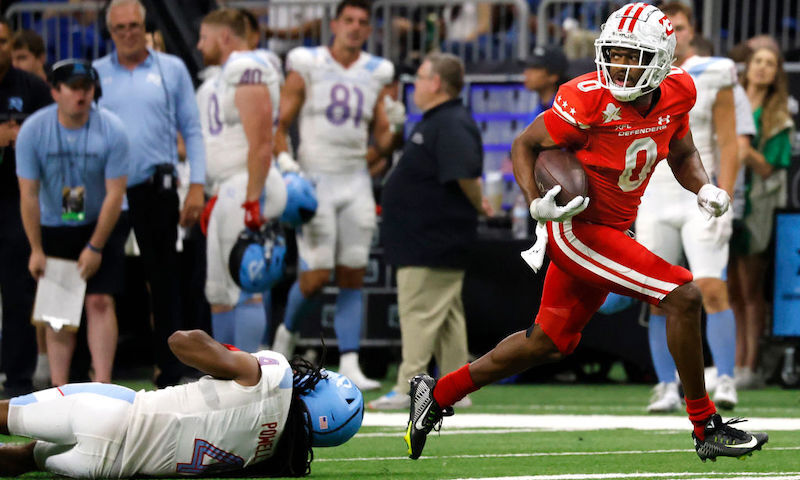UFL DFS: DraftKings Roster Construction, Strategy, & Scoring Overview

Football season ended a little under 2 months ago…or did it!?
We won’t be able to build any NFL lineups until the fall, but that doesn’t mean we have to wait that long to enjoy some football. That’s because yet another spring league is about to enter our lives. On Saturday, the 2024 UFL season officially gets underway. And – as you may expect – DraftKings has you covered with a UFL DFS slate featuring some solid prize pools.
I’ll forgive you if you haven’t kept up with the UFL, which is an amalgamation of the two spring leagues that preceded it – the XFL and the USFL. The small league features a total of 8 teams that all previously existed in either the XFL or the USFL.
Because you can play UFL DFS, you’d better believe we’ll have you covered with content on RotoGrinders all season long. Our brand-new UFL product will be part of the Combo package, and for a limited time, we’re knocking $20 off the monthly price.
UFL DFS Preview
In this preview piece, I’ll provide an overarching UFL breakdown including rule differences, DraftKings UFL DFS roster construction.
Rule Differences from NFL
First, we’ll take a gander at some of the major rule differences that separate the UFL from the NFL.
Second forward pass: As was the case with the XFL and USFL before it, you can throw a second forward pass in the UFL as long as the first pass doesn’t cross the line of scrimmage.
End zone fumbles: While a ball fumbled through the end zone will result in a touchback in the NFL, the same play in the UFL results in the offense retaining possession at the spot of the fumble.
Alternative to Onside Kick: Onside kicks are still in the game, but it’s not the only way to retain possession following a score. Instead, offenses may opt to try and convert a single scrimmage play to gain at least 12 yards from its own 28-yard line. If successful, the offense keeps the ball. This is only allowed during the 4th quarter of a game.
Shootout Style Overtime: The UFL will use the XFL’s old overtime format. The teams will attempt 2-point conversions from their opponents’ 5-yard lines in a best-of-3 format.
Extra Points: There are no kicked extra points in the UFL. Instead, offenses can play for 1, 2, or 3 points after a touchdown, depending on the distance from the goal line the offense chooses to play.
DraftKings UFL DFS Roster Construction
Lineups are a bit different on DraftKings for UFL than they are for NFL contests:
For the NFL, lineups consist of 1 QB, 2 RB, 3 WR, 1 TE, 1 FLEX, and 1 D/ST.
In the UFL, lineups consist of 1 QB, 1 RB, 2 WR/TE, 2 FLEX, and 1 D/ST.
This is the same roster construction DraftKings utilized for USFL contests last year. Clearly, this format allows for more flexibility when building lineups. With just 8 teams in the league, that makes sense. You can play as many as 3 running backs thanks to the flex spots, while you can play a maximum of 4 wide receivers and/or tight ends. However, you only have a minimum requirement of 1 running back, while you don’t actually have to roster a tight end.
Building UFL DraftKings Lineups for Week 1
Needless to say, information will likely be harder to come by ahead of UFL Week 1. While this league is getting plenty of buzz and national TV coverage, it’s also fair to assume none of the 8 teams will be getting dedicated beat reporters.
So, one way you can gain an edge is by doing some of your own research and building lineups accordingly. Our projections team will stay on top of things, but there’s likely an edge to be found if you know where to look for it.
Correlation will be important, of course, as is the case in NFL DFS. Stacking a QB with his top pass-catchers is the easiest way to make sure your lineups are correlated, and it’s the best way to capture an offense’s upside. If the Houston Roughnecks put 40 points on the board, lineups featuring several of Houston’s key offensive pieces together are likely to benefit heavily.
Runbacks may not be quite as important, especially in such a small league. While there is still the same classic correlation between, say, a running back on a heavy favorite and a passing stack on an underdog, I don’t think it’s necessary to chase runbacks in GPPs.
Image Credit: Getty Images